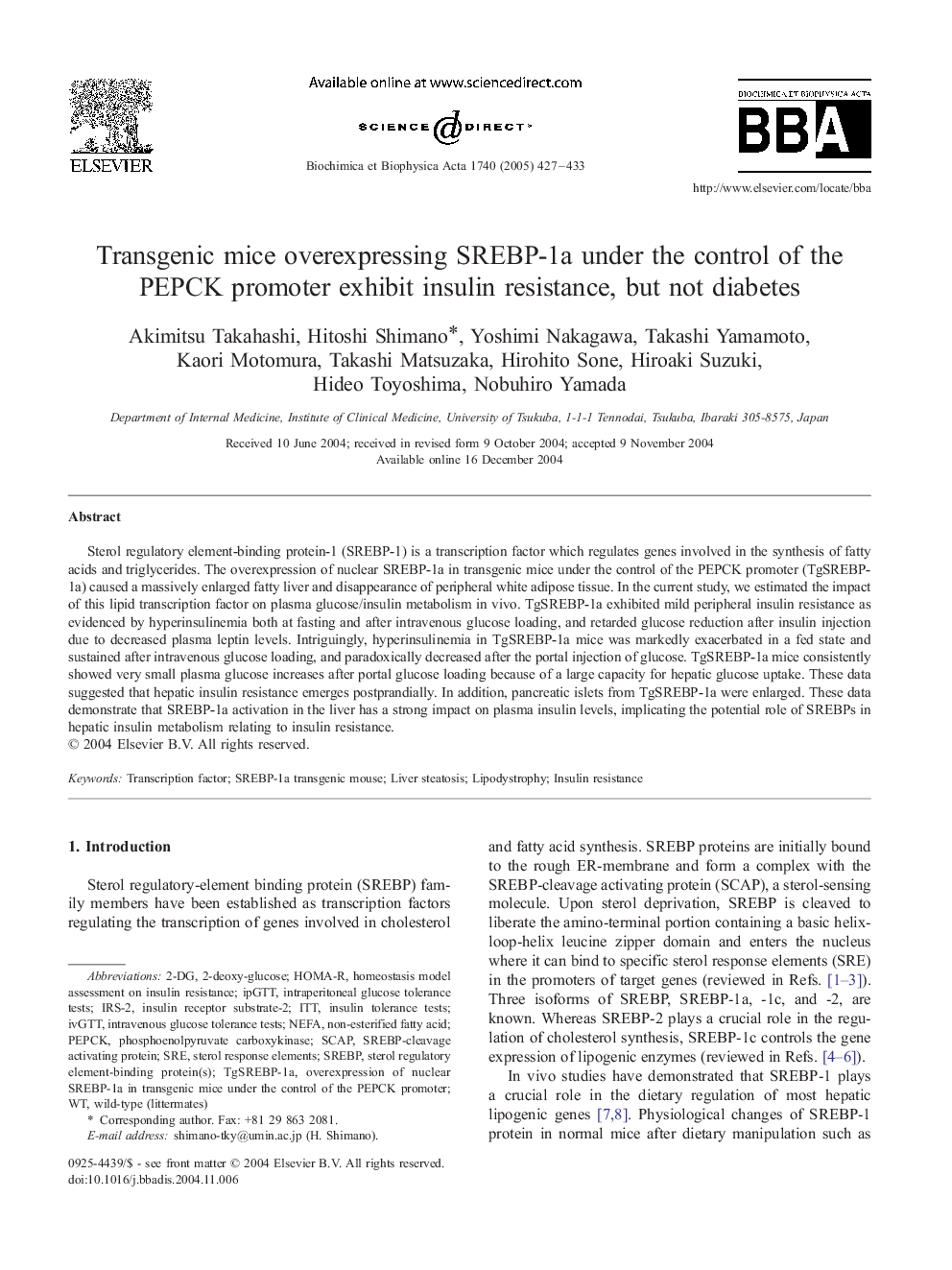| Article ID | Journal | Published Year | Pages | File Type |
|---|---|---|---|---|
| 9879454 | Biochimica et Biophysica Acta (BBA) - Molecular Basis of Disease | 2005 | 7 Pages |
Abstract
Sterol regulatory element-binding protein-1 (SREBP-1) is a transcription factor which regulates genes involved in the synthesis of fatty acids and triglycerides. The overexpression of nuclear SREBP-1a in transgenic mice under the control of the PEPCK promoter (TgSREBP-1a) caused a massively enlarged fatty liver and disappearance of peripheral white adipose tissue. In the current study, we estimated the impact of this lipid transcription factor on plasma glucose/insulin metabolism in vivo. TgSREBP-1a exhibited mild peripheral insulin resistance as evidenced by hyperinsulinemia both at fasting and after intravenous glucose loading, and retarded glucose reduction after insulin injection due to decreased plasma leptin levels. Intriguingly, hyperinsulinemia in TgSREBP-1a mice was markedly exacerbated in a fed state and sustained after intravenous glucose loading, and paradoxically decreased after the portal injection of glucose. TgSREBP-1a mice consistently showed very small plasma glucose increases after portal glucose loading because of a large capacity for hepatic glucose uptake. These data suggested that hepatic insulin resistance emerges postprandially. In addition, pancreatic islets from TgSREBP-1a were enlarged. These data demonstrate that SREBP-1a activation in the liver has a strong impact on plasma insulin levels, implicating the potential role of SREBPs in hepatic insulin metabolism relating to insulin resistance.
Keywords
Related Topics
Life Sciences
Biochemistry, Genetics and Molecular Biology
Ageing
Authors
Akimitsu Takahashi, Hitoshi Shimano, Yoshimi Nakagawa, Takashi Yamamoto, Kaori Motomura, Takashi Matsuzaka, Hirohito Sone, Hiroaki Suzuki, Hideo Toyoshima, Nobuhiro Yamada,
